|
|
Intermittent Issues - This OAR ThatPart 2: Theatrical ProjectionBy David MeekMay 12, 2004
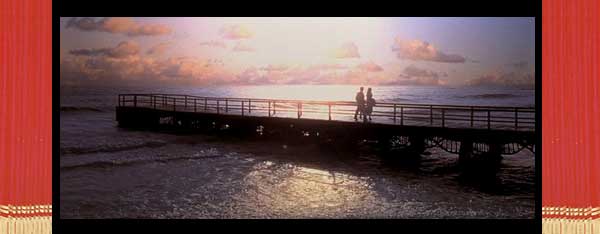 This is the 35mm 'Flat' (1.85:1 AR) screen setting. Note that the curtains have been pulled in to mask off the unused screen space – since 1.85:1 is narrower than 2.35:1, less of the screen is useable. 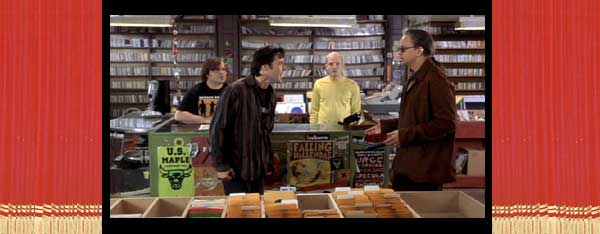 This would be the setting for an 'Academy Standard' (1.33:1 AR) print on a fixed height screen. However, as we'll cover later in this article, most commercial theaters are not configured for this format. 
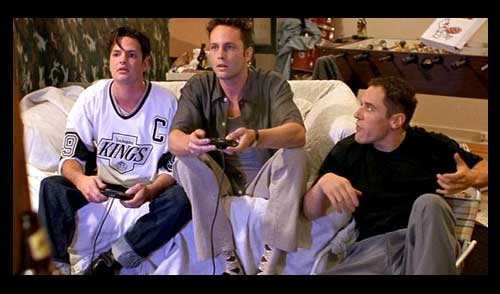 This is the 35mm anamorphic screen setting. Note that the masking has been lowered from the top and raised from the bottom. This is due to the fact that Flat images are taller than anamorphic images, so the wider format has to be masked off at the top and bottom.  The fixed width screen layout provides the opposite result of the fixed height layout: there is more useable screen for Flat 1.85:1 AR prints in fixed width, while anamorphic 2.35:1 AR prints do better with fixed height. Since the majority of films are still shot in the Flat format, the fixed width would seem to be preferable. However, given that most theater companies are loathe to spend money replacing something that isn't broken, you shouldn't expect to see theaters retrofitting their screening rooms with fixed width screens anytime soon. Instead, look for this in more recently constructed theaters.
 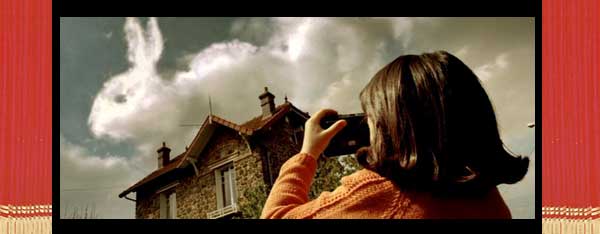 I call this the 'simplest' format since there isn't any decision-making involved – just align the image correctly, and the system produces consistent results. Unlike…
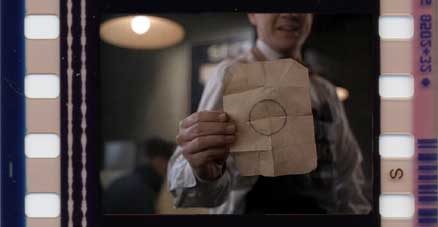 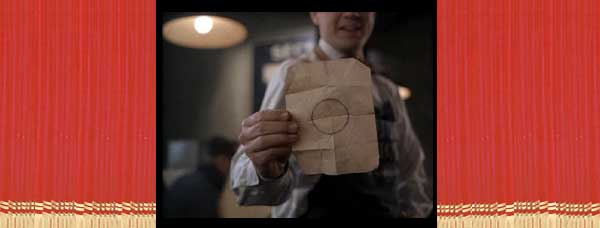 However, if you expanded this image by 'blowing it up' (enlarging it) on the screen, you could produce a wider image. The problem with doing this is that the top and the bottom of the image would now overlap the screen, causing the image to 'bleed over' the screen matting. Obviously, this wouldn't look very good at all. 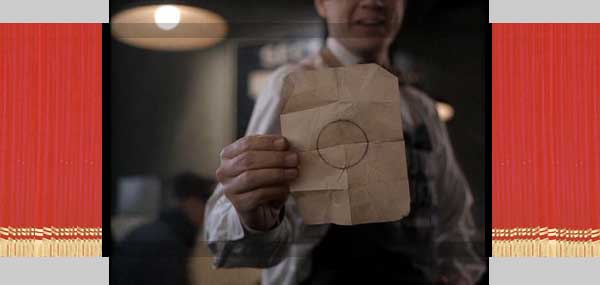 So: how do you get this wider image on the screen, but not show the excess image at the top and bottom? You block that portion of the image, so light doesn't pass through the print – only the 1.85:1 AR area gets illuminated. This is accomplished by inserting an 'aperture plate' into the projector. The 'aperture plate' is a thick piece of metal that has material cut out of it in the middle. Wherever material is cut out, light will make it through the print to the projector's lens. Where the metal is left intact, the light will be blocked. As a result, the aperture plate serves to control how much of the image on the print actually appears on the screen. In this example, the aperture plate has blocked off the light that would normally pass through the print and spill off above and below the screen.  By setting the lens correctly, it is possible to 'zoom' in and out to a near-infinite number of aspect ratios – provided that you make a matching aperture plate for each one (since the dimensions would change). However, in modern commercial theaters, only one Flat lens and aperture plate are used – both set for 1.85:1. I should briefly mention 'matting', as it will come up in Part 3 (home video). Virtually all of the 35mm prints that are produced in Hollywood are 'soft matte' prints. This means that the full frame was exposed in the camera when the film was shot, and that the projectionist has full responsibility for blocking out the excess image on the screen (with the aperture plate). This leads to an important item – the framing adjustment control. All commercial film projectors have a knob or lever that allows the projectionist to move the entire image up or down between the light source and the lens. This control allows the projectionist to fine-tune the image placement (framing) on screen. This is critical on anamorphic (2.35:1 AR) prints, as the entire film frame is in use, and a badly-adjusted image will cause the frame 'break' to appear on screen. 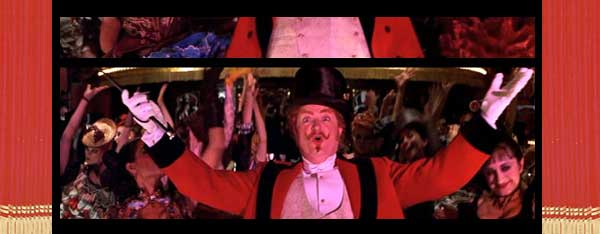 However, this control is of even greater importance on 'flat' format prints. This is due to the fact that the projectionist is in complete control over which part of the full frame image makes it through the aperture plate and onto the screen. Adjust it too far up, and actors appear to be walking in mid-air. Adjust it too far down, and the actors get their heads chopped off. 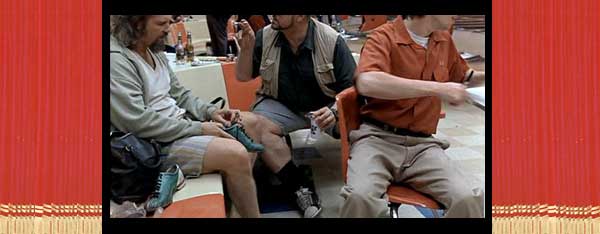 Some directors are very concerned about this possibility and wish to control exactly what makes it onto the theater screen. So, when they shoot a film, the camera contains an aperture plate of its own. This plate prevents the image that will be cropped out in the theater from ever being exposed on the film in the first place. Prints of their films are released with the unexposed areas blacked-out. This is referred to as 'hard matting'. A print produced in this manner can't be adjusted to show extra material at the top or bottom – if not set properly, all you get is a solid black area on screen. Here is a mockup of a hard matted film print. 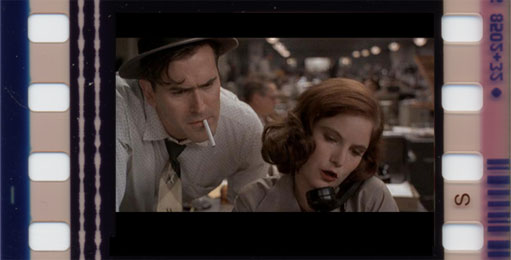
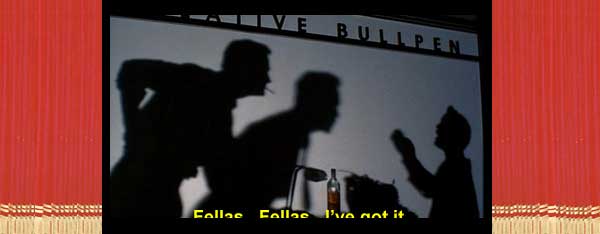 After a few minutes, I realized that they were not using the 1.66:1 AR setup needed, and went to find a manager. After informing him that the subtitles were being cut off, he responded that yes, they were aware of it. He went on to explain that when the framing knob was turned down to show the subtitles, the tops of the actors' heads were cut off. So they reasoned we'd rather see all of the actors' heads than see any of the subtitles. Once I picked my jaw up off the floor, I convinced them to adjust the image down and we watched the rest of the film, finally understanding what was happening. But it taught me an important lesson – while it may be more convenient to go to the closest multiplex which might have picked up a print of a foreign film, I now try to find out the aspect ratio of the film. And if it isn't 1.85:1 or 2.35:1, I drive the extra distance to the specialty art house theater, which is usually equipped to show these prints as intended. (And, if I'm too lazy to do even that much research, I just go to the art house theater anyway.)
 But, as you've probably guessed by now, they too were not equipped with the special lens setup needed to show a 1.33:1 AR print. So they just used their standard Flat setup instead. This is what greeted me when I sat down to watch this masterpiece of direction and cinematography: 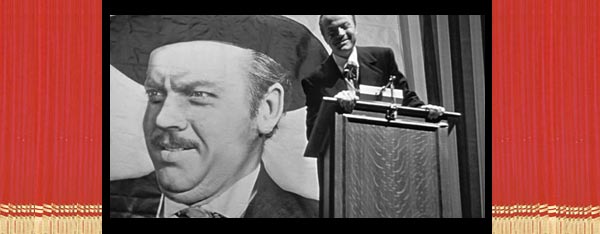 Needless to say, the drive back was accompanied by a large volume of curses directed at the theater chain. However, it didn't have to be that way – some clever folks have come up with a method of showing Academy Standard films in modern theaters. Here's how it works (I witnessed this first hand when Gone With The Wind was re-released a few years back). You start with the original 1.33:1 AR image. 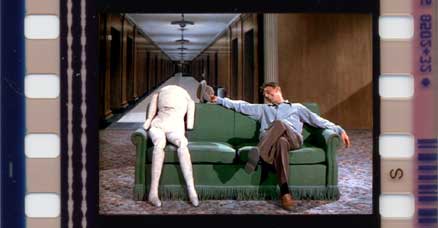 You then take the image and apply an anamorphic squeeze, and add black bars to the sides to fill out the frame width. 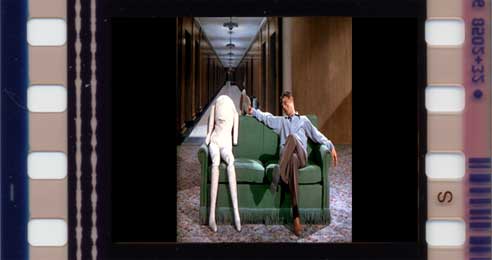 Play this modified print using standard anamorphic lenses, and you get…  It's a shame that older films are now pretty much only re-released to promote a new or restored home video version. But at least it's now possible to make these films widely available in commercial theaters.
[ View other Intermittent Issues columns ]
[ View other columns by David Meek ]
[ Email this column ]
|

|
|
|

|
Friday, November 1, 2024
© 2024 Box Office Prophets, a division of One Of Us, Inc.

